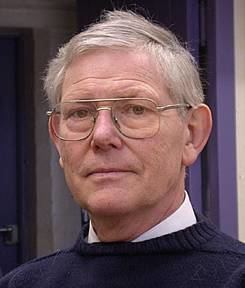Name Malcolm Green | Role Researcher | |
 | ||
Malcolm Leslie Hodder Green FRS FRSC (born 16 April 1936) is Emeritus Professor of inorganic chemistry at the University of Oxford. He has made many contributions to organometallic chemistry.
Contents
Education
Born in Eastleigh, Hampshire, he received his BSc degree from Acton Technical College (London University External Regulations) in 1956 and his PhD from Imperial College of Science and Technology in 1959 under the supervision of Professor Sir Geoffrey Wilkinson.
Career and research
After his PhD, Green undertook a postdoctoral research year with Wilkinson before moving to the University of Cambridge in 1960 as Assistant Lecturer and being elected a Fellow of Corpus Christi College, Cambridge in 1961. In 1963 he was appointed a Septcentenary Fellow of Inorganic Chemistry at Balliol College, Oxford and a Departmental Demonstrator at the University of Oxford. In 1965 he was made a Lecturer and he was also a Royal Society Senior Research Fellow in Oxford 1979–86. In 1989 he was appointed Professor of Inorganic Chemistry and Head of the Inorganic Chemistry Laboratory at Oxford and Fellow of St Catherine's College, Oxford. In 2004 he became an Emeritus Research Professor and continues research with a substantial group. He was a co-founder of the Oxford Catalysts Group plc in 2006.
Green has held many visiting positions including: Visiting Professor, Ecole de Chimie and Institute des Substances Naturelles, Paris (1972), Alfred P. Sloan Visiting Professor, Harvard University (1975), Sherman Fairchild Visiting Scholar at the California Institute of Technology (1981), and Walter Hieber Gastprofessor, University of Munich, Germany (1991).
Green's earliest publications described metal-hydride and metal-olefin complexes, themes that he pursued throughout his career. Many of his early contributions focused on the chemistry of (C5H5)2MoH2 and the related tungsten derivative. These compounds were shown to engage in many reactions related to C-H bond activation.
With Rooney, he was an active proponent of various mechanisms to explain stereochemistry in Ziegler-Natta polymerisation. He used metal vapour synthesis, especially for the preparation of early metal sandwich complexes. He and his students synthesised several examples of complexes exhibiting "agostic" bonds. The word was suggested to him by Jasper Griffin, professor of Classics at Balliol, whom Green asked for an appropriate Greek word to describe the close bonding phenomenon. This work would later lead to the so-called "modified Green-Rooney mechanism" for Ziegler-Natta catalysis, wherein agostic interactions guide the stereochemistry of the alkene insertion step. This proposal found wide acceptance. His work on metal carbide catalysts led to the corporate spin-off company Oxford Catalysts plc, which became Velocys.
Green along with Stephen G. Davies and Michael Mingos compiled a set of rules that summarise where nucleophilic additions will occur on pi ligands known as the Green–Davies–Mingos rules.
Awards and honours
His numerous awards include:
